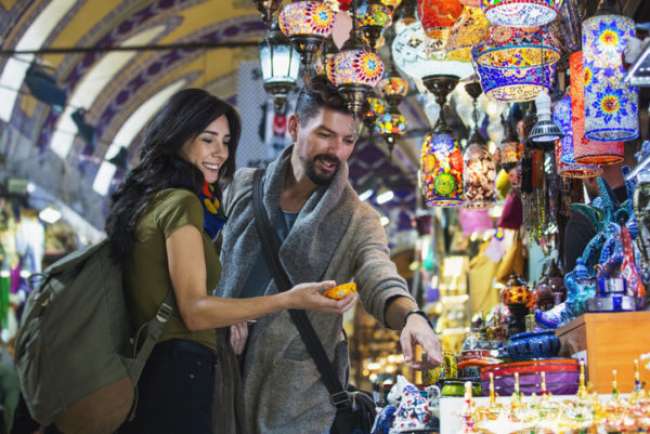-
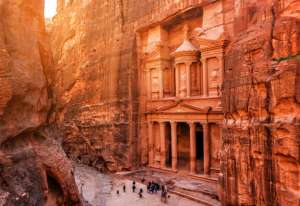
A Journey Through Petra’s Ancient Monuments, Trails, and Rock-Carved Wonders
Petra is one of those rare places where history and landscape blend so deeply that you can’t tell where the human story ends and nature begins. Hidden within red sandstone canyons in southern Jordan, the ancient Nabataean city feels like a dream carved into rock — silent, majestic, and full of secrets. It’s a place shaped over centuries, forgotten for nearly a thousand years, and rediscovered in the 19th century as if it were waiting under the desert dust.
Entering Petra: Tombs, Canyons, and the First Glimpse of the Treasury
Your walk into Petra begins long before reaching its famous landmarks. Just past the visitor entrance stands the Obelisk Tomb, an early clue that Petra is unlike any ancient site in the world — a façade blending Egyptian influences with Nabataean creativity. It’s the kind of structure that makes you pause before continuing deeper into the valley.
From there, the path gradually narrows until you enter The Siq, a long, winding canyon with towering sandstone walls that twist like sculpted ribbons overhead. Light slips through in thin beams, reflecting shades of orange, pink, and red. This dramatic natural corridor builds anticipation with every step.
And then it appears — the first glimpse of The Treasury (Al Khazneh), framed perfectly at the end of the Siq. Standing before it is overwhelming: a massive, immaculate façade carved entirely from the rock face, with elegant columns, statues, and Hellenistic details that show the sophistication of Nabataean engineering. No matter how many times you’ve seen photos, the real sight feels unreal.
The path continues beyond the Treasury into the Street of Facades, a stretch lined with rock-cut tombs that rise above you like an ancient skyline. Further down is The Theater, carved directly into the mountain rather than built from stone blocks — a reminder that the Nabataeans reshaped entire cliffs to match their needs.
Soon you reach the Central Area where ancient marketplaces, temples, and the remnants of bustling city life once filled the valley. The Byzantine Church sits here as well, famous for its richly colored mosaic frescoes preserved from the 5th and 6th centuries — pieces of art that survived fires and earthquakes.
Nearby stands Qasr al-Bint, one of Petra’s main free-standing temples and a structure that once dominated religious life in the city.
Climbing the Monastery Trail and Exploring Petra’s Upper Kingdom
Beyond the central valley, trails wind upward into the mountains. One of the most rewarding is the climb to The Monastery (Ad-Deir), a massive rock-cut building larger but simpler than the Treasury. The path includes long stairways, narrow passages, and stunning viewpoints. When you reach the top, the Monastery sits quietly against the backdrop of open desert — calm, monumental, and deeply impressive.
Other notable trails explore Petra’s “upper level,” starting with the clusters of Royal Tombs carved high into the cliff walls. The Urn Tomb, with its tall interior chambers and dramatic courtyard, is among the most striking. Walking along this area brings you again beside the eastern side of the Street of Facades, creating a loop that shows how Petra was structured both horizontally and vertically.
The High Place of Sacrifice Trail is one of Petra’s most atmospheric routes. Along the way you pass the Garden Triclinium, ceremonial spaces, quiet ledges, and overlooks where the city stretches out below like a carved labyrinth. Reaching the High Place of Sacrifice itself gives you one of the oldest ritual places in the city — a sacred plateau used for ceremonies and worship.
For breathtaking views of the Treasury from above, the Al-Khubtha Trail winds its way across ridges and ledges until you reach a lookout where the famous façade appears far below, perfectly framed by cliffs.
Another demanding but rewarding route is the Umm al-Biyara Trail, one of Petra’s highest peaks. At the top, you’ll find ancient water cisterns that once sustained people living in these highlands — practical, ingenious engineering in an unforgiving landscape.
Near the western edge of Petra, quiet paths lead toward the Crusader Castle at el-Habis, offering a very different layer of history. From the top, sweeping views spread across the desert and the city’s ruins.
Beyond Petra: Little Petra and the Wider Nabataean World
A short drive from the main site brings you to Little Petra (Siq al-Barid), a smaller but equally captivating cluster of carved façades, temples, and residences. It once served as a stopping point for traders and caravans arriving along the ancient spice routes. Little Petra has the same carved beauty as the main city but feels more intimate — a place where you can wander quietly through narrow passages without crowds.
Little Petra also hints at the larger network of Nabataean culture that once stretched across the region, linking Petra to the Arabian Peninsula and beyond.
Petra is more than a tourist destination. It’s a city that reveals its secrets slowly — through carvings, trails, tombs, viewpoints, and the silent presence of mountains shaped by time. Whether you explore its grand monuments or climb its hidden paths, Petra leaves an impression that stays long after you leave. The red stone remembers everything, and for a moment, you become part of its story.
Locations in the video: The Obelisk Tomb (0:01), The Siq (0:0), The Treasury (Al Khazneh, 1:41), Street of Facades (2:22), The Theater (2:51), Central Area (4:30), Frescoes from the Byzantine Church (5:02), Qasr al-Bint (5:26), Trail to the Monastery (5:44), The Monastery (Ad-Deir, 6:07), The Royal Tombs (8:03), Urn Tomb(8:26), again the Street of Facades - Estern side (8:44), High Place of Sacrifice Trail (9:50), Garden Triclinium (11:17), High Place of Sacrifice (12:00), High point view over the Treasury (12:26), Al Khubtha Trail 12:52), Umm al-Biyara Trail (14:23), Water cicterns on top of Umm al-Biyara (15:47), around the Crusader Castle at el-Habis (16:30), Little Petra (18:54).
-
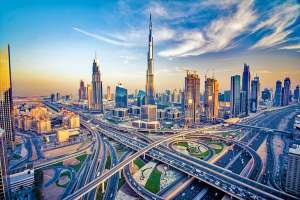
Your Essential Guide to Exploring Dubai’s Highlights, Neighborhoods, and Experiences
Dubai is one of those cities that leaves a lasting impression the moment you arrive — a place where futuristic architecture stretches across the desert, traditional markets sit beside luxury malls, and beaches, marinas, and dunes all blend into one unforgettable experience. Whether you come for shopping, adventure, culture, or simply to feel the energy of a city that never stops growing, Dubai delivers more than you expect.
Understanding Dubai’s Layout and Getting Around the City
Dubai can feel overwhelming at first because it’s spread out across long stretches of coast and desert. Looking at a map helps: major districts like Downtown Dubai, Dubai Marina, JBR, Old Dubai, Deira, Jumeirah, and Palm Jumeirah each have their own character.
Most travelers arrive at Dubai International Airport, where getting into the city is surprisingly easy. Taxis are everywhere, but the Dubai Metro is fast, clean, and comfortable — perfect for reaching Downtown, DIFC, the Burj Khalifa, or Dubai Mall. You’ll want a NOL card, which works for both the metro and buses.
Dubai’s modern side appears first: futuristic skylines, polished streets, and lively neighborhoods. But don’t miss the older areas — they reveal the city’s roots long before the skyscrapers arrived.
Exploring Dubai’s Iconic Districts, Beaches, and Night Views
The city offers so many things to do that exploring it feels like moving between different worlds in a single day.
Start with Dubai Marina, a gleaming waterfront lined with restaurants, yachts, high-rise apartments, and walking paths that come alive in the evenings. Right next to it is Marina Beach, where warm Gulf water and long sandy stretches make it perfect for relaxing, swimming, or people-watching. The marina at night is another experience entirely — the reflections of lights on the water, the cruise boats, and the atmosphere make it one of Dubai’s most photogenic spots.
For a contrast, head to Old Dubai and Deira, where the traditional life of the city still beats strongly. Wander through the Souks — the Gold Souk with its glittering displays, the Spice Souk heavy with aromas, and the Textile Souk near Dubai Creek. Cross the water by taking an abra boat ride; it costs almost nothing and feels like stepping back in time. In this area you’ll also find the Dubai Museum, built inside the old Al Fahidi Fort.
A stunning architectural highlight is the Dubai Frame, a massive golden structure that literally frames the old and new sides of the city from its sky bridge. From here, Dubai looks like a shifting timeline — tradition on one side, futuristic innovation on the other.
Downtown Dubai is home to the crown jewel: the Burj Khalifa. Standing below it, you feel how enormous and surreal it really is. The Dubai Mall sits right beside it — one of the largest malls in the world, home to the Dubai Ice Rink, countless shops, restaurants, and the famous dancing fountains.
Another major shopping and entertainment center is Mall of the Emirates, where you’ll find Ski Dubai, the indoor snow park and ski slope — a full winter environment built in the middle of the desert.
Along the coast near Jumeirah, you’ll see the sail-shaped Burj Al Arab, one of the most photographed hotels in the world. The nearby public beaches offer a great view and a relaxing place to spend the afternoon.
Further out lies Palm Jumeirah, the iconic man-made island shaped like a palm tree. At its tip sits Atlantis The Palm, a huge resort with a water park, aquarium, and luxury dining. Whether you stay there or simply visit, it’s one of Dubai’s most popular destinations for families and travelers.
For thrill-seekers, Skydive Dubai offers one of the most dramatic skydiving experiences in the world — jumping above the Palm with the entire city beneath you.
And of course, you can’t visit Dubai without heading into the desert. Dune bashing, camel rides, sandboarding, and traditional cultural camps make for an unforgettable afternoon and evening under the open sky.
If you have extra time, even a day trip to Abu Dhabi is easy — home to Ferrari World, modern museums, and the stunning Sheikh Zayed Grand Mosque.
Where to Stay, How to Move Around, and What to Expect
Choosing where to stay depends on the experience you want.
• Dubai Marina / JBR → for beach life, nightlife, and a lively atmosphere
• Downtown → close to Burj Khalifa and major attractions
• Deira / Old Dubai → for culture, markets, and more budget-friendly stays
• Palm Jumeirah → luxury resorts and iconic viewsDubai’s public transportation is efficient, but taxis and ride apps are widely used and affordable. The city is designed for easy movement, even across long stretches.
When it comes to cost, Dubai offers a huge range. Street food and local cafés are affordable, while high-end restaurants can be expensive. Attractions vary too — some are free (beaches, old neighborhoods), while others like observation decks or theme parks come with higher prices.
Before leaving, keep a few practical tips in mind: the heat can be intense in summer, modest clothing is appreciated in traditional areas, and staying hydrated during outdoor activities is essential.
Dubai is more than a city — it’s a blend of extremes: old and new, desert and sea, luxury and simplicity. It’s a place where every neighborhood offers something different, every landmark feels carefully designed, and every day brings new discoveries. With its endless attractions and rich contrasts, Dubai is the kind of destination you experience once and instantly understand why people return again and again.
-
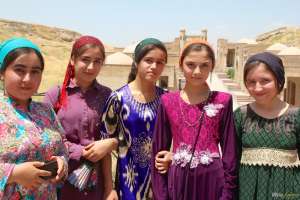
A Journey Through Tajikistan’s Cities, Lakes, Villages, and Mountain Roads
Tajikistan is one of those countries people hear about but rarely imagine visiting — a land of high mountains, winding river valleys, remote villages, and cities shaped by layers of history. Hidden in the heart of Central Asia, it’s a place where the landscapes look untouched, the culture feels warm and grounded, and the roads lead you into scenery that seems almost unreal.
A Mountainous Country at the Heart of Central Asia
Tajikistan sits between Afghanistan, Uzbekistan, Kyrgyzstan, and China — a landlocked, rugged country where more than 90% of the terrain is mountainous. The famous Pamir and Fann Mountains form the backbone of the land, giving travelers some of the most dramatic alpine scenery in the region. It’s a place where every highway twists through deep valleys, turquoise lakes appear around corners, and small villages cling to the edges of steep cliffs.
For many travelers, the journey starts in Dushanbe, the capital and the largest city. With its wide boulevards, leafy parks, and modern landmarks, Dushanbe is calm and surprisingly elegant. It has a gentle pace — morning markets, quiet cafés, museums filled with Silk Road stories, and broad squares where locals spend evenings walking or relaxing with families. The city blends Soviet-era architecture with new developments and cultural monuments, reflecting a country steadily growing while keeping its traditions close.
Food, Lake Landscapes, and Cities With Deep Roots
Tajik food plays a big role in understanding daily life here. Meals are warm, hearty, and meant to be shared. Expect dishes like plov (rice cooked with carrots and lamb), fresh bread still warm from clay ovens, dumplings, soups with herbs, and plenty of tea. The flavors are simple but comforting — the kind of food that fits perfectly with the mountain environments surrounding the country.
One of the most striking natural places to visit is Iskanderkul Lake, an alpine lake high in the Fann Mountains. Its blue-green color changes throughout the day depending on the sunlight, and steep peaks rise directly from the water’s edge. The air is cool, the views are wide, and everything feels untouched. Around the lake, small paths lead to waterfalls and lookouts, making it one of Tajikistan’s most peaceful and photogenic destinations.
Heading north brings you to Khujand, one of the oldest cities in Central Asia, located in the fertile Fergana Valley. It’s lively, colorful, and more traditional in its atmosphere compared to Dushanbe. Markets buzz with activity, locals bargain over fruit and fabrics, and old monuments stand beside newer neighborhoods. Khujand holds an important place in Tajikistan’s history, and it’s a great place to feel the rhythm of everyday life in the region.
Nearby is the Tajik Sea, also known as the Kayrakkum Reservoir — a large, shimmering lake that locals use for swimming, relaxing, and escaping the heat. Despite being man-made, it feels like a real inland sea, with wide open water and quiet spots along the shoreline.
Villages, Mountain Roads, and the Legendary Pamir Highway
Some of Tajikistan’s most unforgettable moments happen far from the cities. The country’s small mountain villages show a simpler way of life: stone houses, gardens growing along streams, children playing outside, and older villagers greeting travelers with kindness. Life here moves slowly, shaped by the seasons and the landscape. These villages offer a glimpse into traditions that haven’t changed much in decades.
From these remote areas, the road eventually leads to the Pamir Highway — one of the highest and most dramatic road journeys in the world. The highway winds through towering mountains, deep valleys, and high-altitude plains where the air is thin and crisp. The scenery changes constantly: barren cliffs, blue lakes, distant snowcaps, and stretches of emptiness that feel otherworldly. Traveling the Pamir Highway gives you a sense of how vast and untouched Tajikistan really is.
Near the western border lies Tursonzoda, a greener, more agricultural region known for fields, orchards, and warmer weather. It feels different from the high mountains — more relaxed, more humid, and rich with farmland.
Most journeys eventually circle back to Dushanbe, where the modern city comforts seem almost strange after days spent in remote landscapes. The capital feels even softer and more peaceful when you return, offering quiet parks, good food, warm hospitality, and a gentle conclusion to a very different kind of adventure.
Tajikistan is not a typical tourist destination — and that’s exactly what makes it special. From alpine lakes to ancient cities, from simple village life to high mountain roads, it offers experiences that feel raw, genuine, and deeply connected to nature. Once you understand where Tajikistan is, you realize it’s not just a place on the map — it’s a place full of stories waiting to be discovered.
-

Dubai’s Transformation & Its Future
A Look at Dubai’s Evolution and the Megaprojects Shaping Its Future
Dubai has reinvented itself more than almost any city in the world. What was once a modest trading port along the Arabian Gulf has grown into a skyline of glass towers, man-made islands, record-breaking engineering, and bold ideas that seem to come straight from the future. Walking through Dubai today, you feel the ambition behind every district — a place constantly shifting, shaping, and re-imagining what a modern city can be.
From Ambitious Beginnings to Global Icons
Dubai’s rise didn’t happen slowly. It unfolded through a series of daring decisions, each one bigger than the last. The early symbol of this ambition was the Burj Al Arab, a sail-shaped hotel rising from its own artificial island. When it opened, it wasn’t just another luxury hotel — it became a statement that Dubai intended to stand out on the world stage.
Then came Palm Jumeirah, a massive man-made island shaped like a palm tree, visible even from space. What seemed like an impossible engineering challenge became a globally recognized landmark and one of the most popular residential and tourism destinations in the region. Its creation also sparked a new wave of coastal development that would continue for years.
To connect the expanding city, Dubai built the Dubai Metro, a sleek, driverless transportation system that cut through the urban sprawl and made commuting across long distances surprisingly easy. It helped tie together neighborhoods, shopping districts, and business hubs that were growing at an incredible pace.
And of course, at the heart of Dubai’s skyline stands the Burj Khalifa, the tallest building on Earth. Whether you look at it from the surrounding fountains or watch it from a distance at sunset, the tower doesn’t just dominate the skyline — it defines the city’s identity. It’s a reminder of how far Dubai has come, and how far it’s still willing to go.
Megaprojects That Shaped the Modern City
As Dubai grew, it didn’t limit itself to the traditional definitions of infrastructure. The city mixed engineering, tourism, culture, and global connectivity into its development.
One major step forward is Al Maktoum International Airport, a project designed with the future in mind. When fully completed, it aims to become one of the largest airports on the planet — a global aviation hub built for a world where travel keeps expanding.
Another eye-catching landmark is the Dubai Frame, a giant architectural frame that represents the city’s contrast between past and present. On one side you see Old Dubai; on the other, the modern skyline. It’s a symbol of how quickly Dubai has evolved, and how it still holds onto the older parts of its story.
Along the coast sits Ain Dubai — often referred to simply as “The Eye.” This giant observation wheel offers panoramic views of the marina, beaches, and towers below. It’s one of the world’s largest of its kind, built to become both an entertainment attraction and a new visual signature for the waterfront.
Rising in the financial district, One Zabeel is another striking project. Two massive towers connected by one of the longest cantilevered structures ever built, it stands as a symbol of cutting-edge design and Dubai’s appetite for architectural experimentation.
Nearby, the Meydan District One development brings together luxury residences, green spaces, and an enormous artificial lagoon. The idea behind this project is to balance urban living with open water and recreation — part of Dubai’s strategy to create lifestyle destinations rather than just neighborhoods.
Looking Ahead: The Vision Behind Dubai’s Future Megaprojects
Dubai’s next chapter is just as ambitious as its past. The upcoming developments focus on sustainability, advanced transportation, and futuristic urban design — all aiming to prepare the city for decades ahead.
A centerpiece of this future vision is Dubai Creek Harbour, a huge waterfront district planned to become one of the most significant urban environments in the region. Its combination of residential towers, nature preserves, marina areas, and cultural venues shows Dubai’s shift toward integrated, livable spaces. The project also includes the plan for a new super-tall tower, designed to become another global landmark.
The city is also pushing investments in renewable energy, smart mobility, expanded metro lines, and sustainable urban planning. Dubai’s future is not just about building larger and taller structures — it’s about building smarter, greener, and more connected environments.
Dubai’s transformation tells a story of relentless ambition. Every major project — from the early icons to the new megastructures rising now — shows a city constantly shaping its identity and reaching for the next milestone. Whether you view it from the desert, the sea, or the top of the world’s tallest building, Dubai continues to evolve, and its future looks just as bold as its past.
-

15 Strangest Things Recently Discovered In Egypt
A Look Into Egypt’s Most Fascinating and Unusual Archaeological Finds
Egypt is famous for its pyramids, mummies, and monumental temples — but beyond the iconic sites, archaeologists keep uncovering things that are far stranger, more unexpected, and sometimes downright mysterious. From sealed tombs hidden under sand for millennia to bizarre artifacts that don’t fit neatly into any known ancient tradition, Egypt continues to reveal stories that feel almost unbelievable.
Buried Mysteries and Tombs That Shouldn’t Exist
Every year, new tombs appear in places scholars thought were already fully explored. Some of the strangest discoveries come from burial sites that break every rule we thought we understood.
Archaeologists have opened chambers filled with painted wooden coffins stacked like a vertical puzzle — untouched for thousands of years, the colors still vivid. In other sites, they’ve found burials with unusual combinations of objects, like mummified animals placed around a human coffin, hinting at rituals not documented in any known text.
There was even a recent discovery of sealed sarcophagi with unusual resin mixtures, creating a sweet, almost perfume-like scent when opened — a detail that shocked researchers who expected decay instead of fragrance.
These tombs show that ancient Egyptians experimented with beliefs and burial practices more than we ever imagined.
Artifacts That Challenge What We Thought We Knew
Egypt doesn’t just reveal tombs — it offers up objects so unusual that researchers debate their purpose for years.
Some discoveries include strangely carved statues with facial proportions not typical of Egyptian art, as if sculpted by a different cultural influence. Others involve mysterious ceremonial tools, made from rare materials and decorated with symbols that have no clear meaning in current hieroglyphic dictionaries.
One particularly odd find was a collection of miniature boats buried far from any Nile waters, possibly used in spiritual rituals we still don’t understand. Another was a set of scarabs carved from unknown mineral mixtures, unlike anything found in other dynasties.
Each new object opens a door into questions rather than answers.
Structures and Hidden Places That Defy Expectations
Egypt’s strangest discoveries aren’t always tiny relics — sometimes they’re enormous, unexpected structures hidden beneath the ground.
In several desert regions, archaeologists detected subsurface anomalies that led them to forgotten temples, oddly shaped chambers, and passageways with architectural styles not seen in mainstream Egyptian design. Some appear misaligned with traditional celestial orientations, suggesting they were used for local or secret rituals.
In remote areas along ancient trade routes, researchers have uncovered rock inscriptions showing ships, animals, and symbols from foreign cultures that had never been associated with Egypt before. These carvings hint at contact with travelers or merchants long before official records mention those connections.
There are even theories of hidden rooms inside the Great Pyramid, based on recent scanning technologies — still unconfirmed, but intriguing enough to keep experts digging deeper.
Mummies, Animals, and Rituals That Feel Almost Otherworldly
Perhaps the most widely reported strange discoveries involve mummies — not just human ones, but creatures preserved with extraordinary care.
Recent excavations revealed entire animal cemeteries, containing mummified cats, crocodiles, falcons, and even snakes. But the oddest findings are hybrid burials where certain animals were arranged around a human body, suggesting symbolic meanings lost to time.
In one excavation, researchers found a mummy whose brain was unusually preserved, unlike others from the same era. In another, coffins contained incomplete remains, arranged in symbolic patterns rather than anatomic order.
These finds challenge everything we thought we knew about ancient Egyptian spirituality, medicine, and rituals for the afterlife.
Egypt is a country where every dig feels like opening a new chapter in a book that refuses to end. These strange discoveries remind us that Egypt’s ancient world was far more complex, experimental, and mysterious than the familiar postcard images suggest.
All Videos
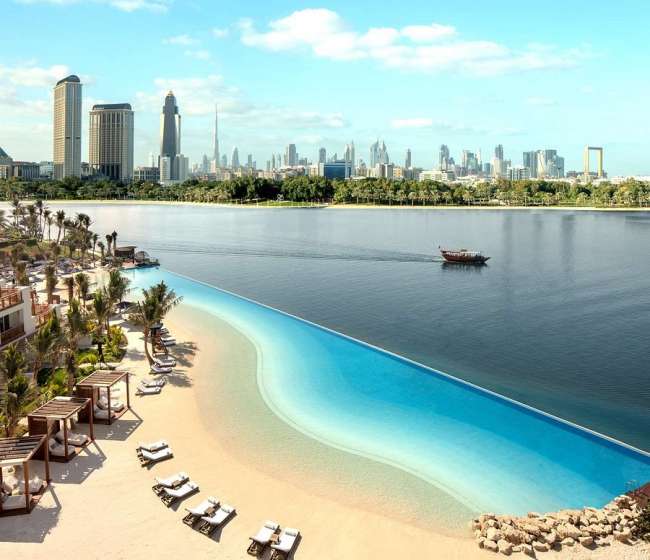
Dubai’s Transformation & Its Future

15 Strangest Things Recently Discovered In Egypt

11 Things NOT to do in Israel
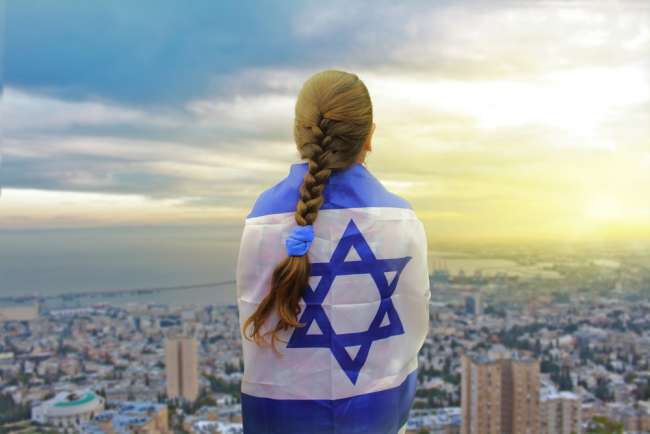
Things to do in Israel: Best Places to Visit





